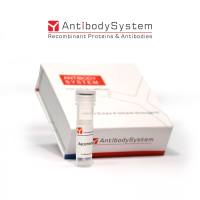Translation Using a Wheat-Germ Extract
互联网
634
Wheat-germ extract provides a reliable, convenient, and easy-to-use system to initiate translation from a wide variety of viral, prokaryotic, and eukaryotic mRNAs and produce full-length polypeptide products (1 ). Translation reactions in vitro may be directed by either mRNA isolated in vivo or by RNA templates transcribed in vitro. The mRNA synthesized in vitro should contain a 5′ cap structure to enhance translational activity (2 ). Wheatgerm extract readily translates certain RNA preparations, such as those containing low concentrations of double-stranded RNA (dsRNA) or oxidized thiols, which am inhibitory to translation in reticulocyte lysate. Translation products may be further analyzed for processing events by the addition of canine pancreatic microsomal membranes (3 ). Steady improvements in the preparation of wheat-germ extract have allowed for performance comparable to that achieved in rabbit reticulocyte lysates (4 ). Studies of translational control are frequently done in wheat-germ extract because of the low level of endogenous mRNA present and lack of endogenous processing capabilities. Also, wheat-germ extract differs from rabbit reticulocyte lysate in that it does not contain endogenous transcription factors and, therefore, is the extract of choice for expressing eukaryotic transcription factors (5 ).









